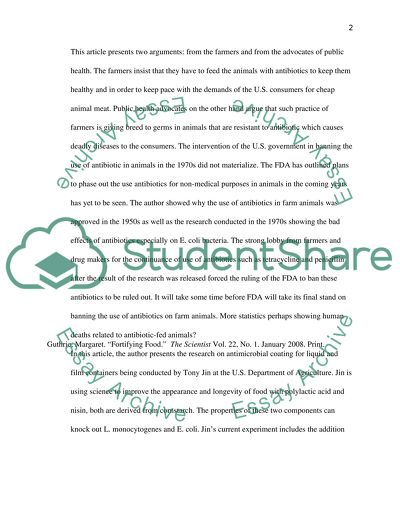Food- Steroids. Anitbiotics. Sprays. Are food manufacturers killing us Research Paper. Retrieved from https://studentshare.org/english/1604962-food-steroids-anitbiotics-sprays-are-food-manufacturers-killing-us-annotated-bibliography
Food- Steroids. Anitbiotics. Sprays. Are Food Manufacturers Killing Us Research Paper. https://studentshare.org/english/1604962-food-steroids-anitbiotics-sprays-are-food-manufacturers-killing-us-annotated-bibliography.


